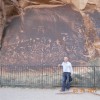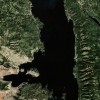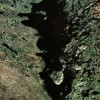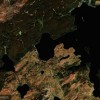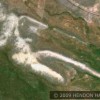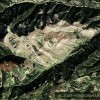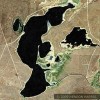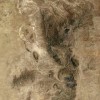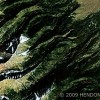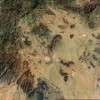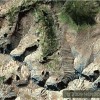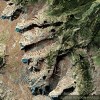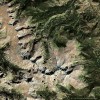
Possible Dating of These North American Geoglyphs
Posted on Tuesday, July 13th, 2010
I believe I have come across evidence that may show when the geoglyphs I have discovered in North America were created. It may be evidence that indicates that the geoglyphs were created BEFORE a particular historical period. How far before that period is yet to be determined.
The key to my newfound belief is The Wei Chu-Hsien White Rhino Head that I posted on April 23, 2010. At the time of my posting I was puzzled as to why Chinese artists had the slightest interest in a rhinoceros. Little did I know in April 2010 what a significant role the rhinoceros has had in ancient Chinese history and how that role has transformed into the legend of the unicorn the symbol of Chinese justice and into medicines that are used by Chinese and the Chinese Pangu myth.
The prehistoric ancestor of the rhino was the Elasmotherium. “The genus appeared during the Late Pliocene in Central Asia…..It occupied all of the southwestern part of Russia, reaching eastward to Western Siberia.” Although “it is believed that Elasmotherium died out in prehistoric times…..there is also a testimony by the medieval traveler Ibn Fadlan which has been interpreted by some to indicate that Elasmotherium may have survived into historical times.” “Some have argued that the survival of Elasmotherium into historical times may be the source of the unicorn myth, as the animal description could be argued to fit with the Persian Karkadann unicorn, and the Chinese Zhi unicorn.”
During the Shang Dynasty (1700-1027 B.C.) herds of rhinoceros, antelope (Saola) and elephants roamed the plains and forests of China. The ancient Chinese of that time were well aware of these animals and their habits.
All this started to change during the Eastern Zhou (770-221 B.C.) and Warring States period (475-221 B.C.) when these animals were hunted to extinction in China and the remaining herds started their gradual migration to India and South East Asia where remnants of these once enormous herds survive to this day. Temperature changes in Northern China also were a factor in this shift to the south.
By the time of the Qin Dynasty (221-207 B.C.) rhinos in China were virtually extinct because during the previous dynasties they had been slaughtered for their tough skin used for armor and shields and for their horns which were used for medicine. Author Jeannie Parker has done a tremendous amount of research on the role of the rhinoceros in ancient China. Her book Chinese Unicorn is available in its entirety on the internet. (Jeanie Parker has not endorsed my conclusions on my website or the conclusions I have made from her research. These conclusions are mine alone).
In Chapter 22 Ms. Parker writes:
“Human beings have a tendency to make images relevant to their own understanding. But after the drastic reduction of the rhino population during the Eastern Zhou Dynsty, this situation changed dramatically.” In this chapter Ms. Parker writes and illustrates with pictures that after the rhino disappeared from the heartland of China, Chinese artists of subsequent generations forgot what the rhino looked like and began producing images of rhinos that were extremely crude and inaccurate.
Because the image of The Wei Chu-Hsien White Rhino Head and the image of The Gavin Menzies Antelope (Saola) that I have located in North America are not distorted but are correct images of these animals that roamed China during the Shang Dynasty then possibly these images were created by Shang Dynasty Chinese Artists or earlier artists who were very familiar with these animals. Artists from subsequent dynasties would have distorted these unfamiliar animal images.
This information may provide by default the latest period these accurate images could have been created. (This of course assumes this is Chinese art).
There are other aspects of the rhinoceros in ancient China of which you should be aware.
- The Pangu Myth (Google: “rhino pangu myth”)
- Chinese Totem
- The Unicorn Myth and the Elasmotherium and Rhino Connection.
- The Role of the Unicorn in Chinese Justice
In closing I use a quote from Chapter 19 page 2 first paragraph:
“You, (Grand) Empress Dowanger, have controlled the rule for several years; your grace and bounty have inundated and overflowed, so that a filial attitude of submission (has spread over) the four quarters and not even the most distant regions with different customs have failed to turn towards correct principles…………, kings of the Eastern Barbarians crossed the Great Ocean to offer the treasures of their states, …………….” (Dubs, 1955, 214-15)
Thank you Jeannie Parker for your great work on this topic.
The Beak of the 10th Sun Raven STILL GLOWS!





